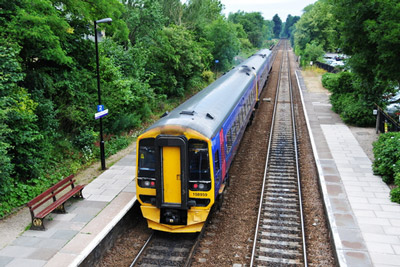£13.5 billion to run GB railways – ORR publishes rail industry financial data
Posted: 9 March 2016 | | No comments yet
The Office of Rail and Road (ORR) has published its ‘GB rail industry financial information 2014-15’ report, detailing the latest rail industry financial data from train operators, Network Rail and governments.


The Office of Rail and Road (ORR) has published its ‘GB rail industry financial information 2014-15’ report, detailing the latest rail industry financial data from train operators, Network Rail and governments.


The ORR has produced a report providing detailed analysis of the latest rail industry financial information for the period 2014-15. Key finding of the report include:
- In 2014-15, the rail industry’s income was £13.5 billion. Most of this was from passengers (71%), with governments providing 26% of funding. Other sources of income, such as property, provided 3%.
- After adjusting for payments within the industry, the overall cost of running Great Britain’s railways was £13.6 billion, with 54% of these costs incurred on train operations and 46% on rail infrastructure.
- Compared with 2013-14, industry income from passenger fares has increased by £0.4 billion (5%), to £8.8 billion in 2014-15. This is primarily because the number of passenger journeys increased by 4%.
- Governments’ funding of the rail industry as a whole has reduced by 9%, from £3.9 billion to £3.5 billion in 2014-15. This includes funding from all government sources, including devolved administrations and passenger transport executives.
- At an aggregate level, franchised train operators contributed significantly more to governments than in previous years. Whereas in 2013-14 franchises received net support of £0.1 billion, in 2014-15 they made net payments of £0.7 billion to governments.
- Rail infrastructure net funding from governments increased by 12% from £3.7 billion in 2013-14 to £4.2 billion in 2014-15.
- Industry costs increased by £0.9 billion (7%) in 2014-15, largely due to an increase in Network Rail’s maintenance and renewals costs, as well as an increase in train operator costs.
- In 2014-15, total governments’ funding varied from £1.66 per passenger journey in England to £6.70 per journey in Scotland and £9.14 per journey in Wales. The rail industry has high fixed costs, so these differences in funding are partly due to the very different average passenger densities, with 129 passengers per train in England, 81 in Scotland and 69 in Wales.
“Passengers are a significant source of funding for the industry, they must lie at the heart of the railways’ continued evolution”
ORR chief executive, Joanna Whittington, commented: Railway use continues to rise and as passengers are a significant source of funding for the industry, they must lie at the heart of the railways’ continued evolution. Our industry financials publications provide an open and comprehensive explanation of industry income and expenditure to help passengers understand how the money they pay in fares is being used.”
“Ticket sales now representing nearly three quarters of total income”
Reacting to the latest figures, Stephen Joseph, Chief Executive of Campaign for Better Transport, said: “Rail users are continuing to pay record amounts toward the running the railways. With ticket sales now representing nearly three quarters of total income, passengers interests like simpler, cheaper, fairer ticketing and better stations and trains should be central to rail policy rather than languishing at the margins.”


Source: ORR



